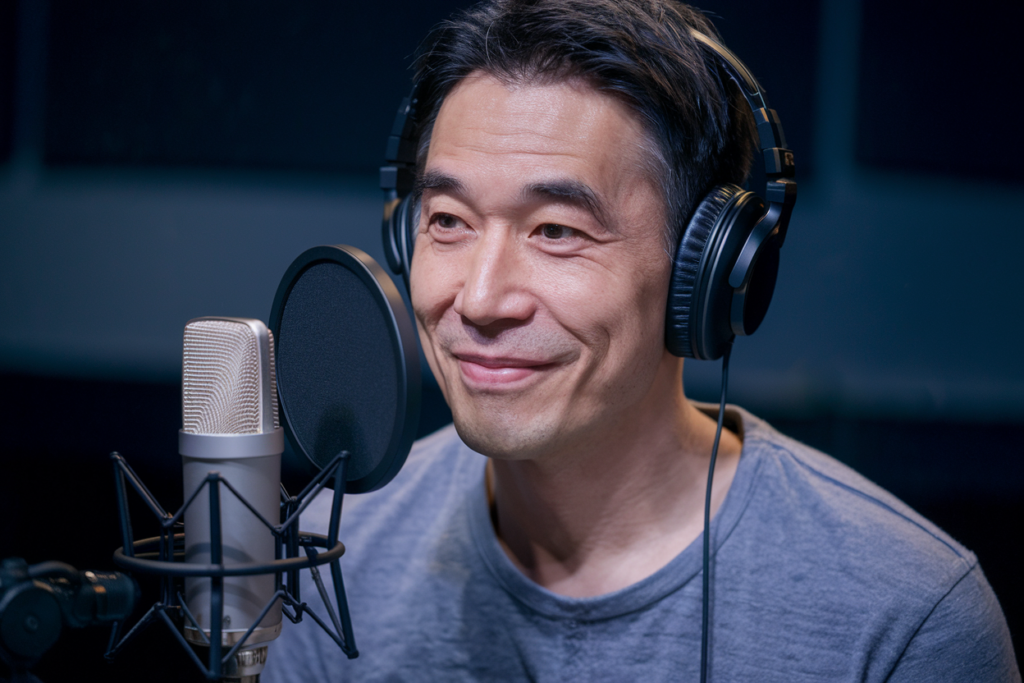Key Takeaways
- Cultural Exports: Japanese media, particularly anime and manga, serves as powerful cultural exports that resonate with global audiences through unique storytelling and artistic styles.
- Global Communities: The popularity of anime conventions and online forums highlights a strong community built around Japanese media, fostering connections among fans across different cultures.
- Impact of J-Pop: J-Pop has emerged as a significant force in the global music scene, blending Western influences with distinctly Japanese elements to attract diverse listeners.
- Technological Advancements: Innovations in streaming platforms have transformed how audiences access Japanese content, enhancing viewer engagement through high-definition visuals and community interaction.
- Successful Franchises: Iconic franchises like “Naruto,” “Attack on Titan,” “Final Fantasy,” and “Pokémon” showcase the globalization of Japanese pop culture by capturing diverse narratives that appeal to international audiences.
- Voice Talent’s Role: Skilled voice actors enhance emotional depth in animated characters, bridging cultural gaps while allowing fans to experience authentic narratives through original and localized versions.
Ever wondered how Japanese culture has woven itself into the fabric of global media? From anime to video games, Japan’s influence is undeniable and ever-growing. As you dive into this fascinating world, you’ll discover how unique storytelling techniques and innovative artistry have captivated audiences worldwide.
Overview of Japanese Media Influence
Japanese media profoundly shapes global entertainment through its unique storytelling and artistic styles. The rise of anime has introduced diverse narratives that resonate with audiences worldwide, often exploring complex themes and emotions. This medium’s ability to blend genres allows for rich character development and imaginative worlds.
Video games from Japan have also made a significant impact, pioneering innovative gameplay mechanics and immersive experiences. Franchises like “Final Fantasy” and “Pokémon” showcase not just engaging storylines but also the artistry involved in their creation. These games attract players globally, creating communities that share a passion for Japanese culture.
The influence extends beyond visual media; voiceovers play a crucial role in bringing characters to life. Skilled voice actors add depth to animated characters, enhancing emotional connections. Many fans appreciate original Japanese voice talent while also enjoying localized versions featuring talented voice over artists who capture the essence of these characters.
Moreover, live-action adaptations of popular anime further bridge cultural gaps, sparking interest in both Japanese cinema and international interpretations. As these adaptations reach wider audiences, they introduce viewers to the richness of Japanese narratives.
Japanese media’s distinctive qualities continue to inspire creators around the globe while captivating diverse audiences with innovative storytelling techniques and vibrant artistry.
Key Elements of Japanese Media
Japanese media significantly influences global entertainment through its unique characteristics. Two major elements stand out: anime and manga, along with J-Pop music.
Anime and Manga as Cultural Exports
Anime and manga serve as powerful cultural exports, captivating audiences worldwide. They feature distinctive art styles, compelling storylines, and diverse genres that appeal to various age groups. Popular titles like “Naruto” and “Attack on Titan” showcase rich character development alongside intricate plots that resonate with viewers beyond Japan’s borders.
These animated series often include voiceovers that enhance emotional depth, allowing characters to come alive in a way that resonates deeply with fans. The blend of original Japanese voice talent and localized versions ensures accessibility while maintaining authenticity.
Furthermore, the international popularity of anime conventions highlights the strong community built around these cultural products. Fans engage passionately through cosplay, discussions, and online forums, fostering connections across cultures.
J-Pop and Its Global Impact
J-Pop (Japanese pop music) has emerged as a significant force in the global music scene. Artists like Hikaru Utada and Arashi have gained substantial followings outside Japan due to their catchy melodies and unique soundscapes. This genre often incorporates elements from Western music while retaining distinctly Japanese influences.
The fusion of catchy tunes with vibrant visuals in music videos creates an engaging experience for listeners everywhere. Moreover, collaborations between J-Pop artists and international musicians reflect a growing cross-cultural exchange within the industry.
J-Pop’s influence extends into other media forms as well; it frequently features prominently in anime series or films, enhancing storytelling through carefully curated soundtracks. As you explore this dynamic landscape of Japanese media, you’ll discover how these elements continue to shape global trends while inviting new audiences into their fold.
The Role of Technology in Media Production
Technology profoundly shapes media production, particularly in how Japanese content reaches global audiences. Innovations in digital platforms and streaming services have transformed the distribution landscape, making it easier for you to access diverse media from Japan.
Innovations in Streaming and Digital Platforms
Streaming services revolutionize how you consume anime, video games, and J-Pop music. Platforms like Crunchyroll and Netflix offer vast libraries filled with titles that blend captivating storytelling with stunning visuals. These platforms enable instantaneous access to popular shows like “Demon Slayer” or movies from Studio Ghibli, engaging audiences worldwide.
Digital platforms also foster community interaction through social media channels and forums. You can discuss plot twists or character development while connecting with fans globally. This sense of community enhances your experience as a consumer of Japanese media.
Technological advancements extend beyond just viewing options. With high-definition streaming capabilities, creators present their work with vibrant clarity that amplifies the emotional depth of characters—especially important when considering voice talent’s role in bringing these characters to life. Quality voiceovers can elevate storytelling by adding layers of personality to animated personas or game protagonists.
In addition, advances in virtual reality (VR) technology promise immersive experiences that transport you directly into the worlds created by Japanese artists. Whether it’s exploring an expansive open-world game or participating in a VR concert featuring J-Pop stars, these innovations deepen your connection to the narrative and artistry behind each project.
With continuous technological evolution influencing Japanese media production, you’re witnessing a dynamic shift that enriches not only the content but also your engagement as a viewer or player. Embracing these changes allows you to appreciate new forms of creativity emerging from Japan’s cultural landscape more fully.
The Globalization of Japanese Pop Culture
Japanese pop culture has made a significant mark on the global stage, influencing media landscapes and creating a lasting impact. Its reach extends beyond Japan’s borders, captivating audiences through innovative storytelling and unique artistry.
Case Studies of Successful Japanese Media Franchises
Several franchises illustrate how Japanese media shapes global entertainment. Anime series like “Naruto” and “Attack on Titan” demonstrate compelling narratives that resonate with diverse audiences. These shows combine intricate plots with rich character development, often enhanced by skilled voice talent that brings characters to life in emotionally engaging ways. Fans appreciate both original voiceovers and localized versions, as they experience the depth of each narrative through varied interpretations.
Video game franchises such as “Final Fantasy” and “Pokémon” further showcase this globalization. Both series offer immersive storylines complemented by stunning visuals and soundtracks that enhance player engagement. Voice actors contribute significantly, adding personality to beloved characters while helping players forge emotional connections to their journeys.
The thriving world of J-Pop music also plays a crucial role in spreading Japanese culture internationally. Artists create catchy melodies paired with vibrant aesthetics that appeal to global listeners. Music videos often feature themes familiar across cultures, drawing in fans who enjoy not just the sound but the visual storytelling too.
Overall, these successful franchises exemplify how Japanese pop culture transcends geographical boundaries, fostering communities united by shared interests in anime, video games, and music. The influence of skilled voice talent adds an extra layer of connection for fans worldwide.
Conclusion
Japanese media’s influence on the global stage is undeniable. Its unique storytelling and innovative artistry continue to captivate audiences everywhere. Whether you’re drawn into the intricate worlds of anime or the engaging narratives of video games, there’s a rich tapestry of culture waiting for you.
Engaging with J-Pop brings another layer to this experience, offering catchy melodies that resonate well beyond Japan. The rise of digital platforms has made it easier than ever for you to explore this vibrant culture and connect with fellow fans around the world.
As Japanese pop culture thrives internationally, it fosters communities united by shared passions. By embracing these captivating elements, you become part of a cultural movement that transcends borders and celebrates creativity in all its forms.
Frequently Asked Questions
What is the impact of Japanese culture on global media?
Japanese culture significantly influences global media through its unique storytelling and artistry in anime, video games, and J-Pop music. These mediums captivate audiences worldwide, showcasing diverse narratives and complex themes that resonate beyond Japan.
How does anime blend genres effectively?
Anime combines various genres to create rich character development and intricate plots. This blending captivates viewers by offering layered storytelling, as seen in popular titles like “Naruto” and “Attack on Titan.”
Why are Japanese video games so popular internationally?
Japanese video games like “Final Fantasy” and “Pokémon” are celebrated for their engaging storylines and artistic innovation. They foster global communities around shared interests in gameplay, characters, and overarching narratives.
What role do voiceovers play in anime?
Voiceovers enhance emotional connections to animated characters by bringing them to life. Fans appreciate both original Japanese voice talent and localized versions, which contribute to a deeper understanding of the characters’ emotions.
How has technology transformed the distribution of Japanese media?
Advancements in digital platforms like Crunchyroll and Netflix have revolutionized how Japanese content is accessed globally. High-definition streaming allows fans instant access while fostering community interactions through social media engagement.
What makes J-Pop influential in the global music scene?
J-Pop’s catchy melodies and vibrant visuals appeal to international audiences. Artists like Hikaru Utada and Arashi have gained significant followings abroad, with their music often enhancing storytelling elements in other media forms such as anime.
How do anime conventions contribute to fan communities?
Anime conventions provide a space for fans to connect over shared interests through cosplay, discussions, and activities centered around their favorite shows or characters. These events strengthen community bonds within the fandom.
What is globalization’s effect on Japanese pop culture?
The globalization of Japanese pop culture has created a lasting impact by allowing franchises like “Naruto,” “Attack on Titan,” “Final Fantasy,” and “Pokémon” to reach diverse audiences worldwide while fostering communities united by these cultural products.







